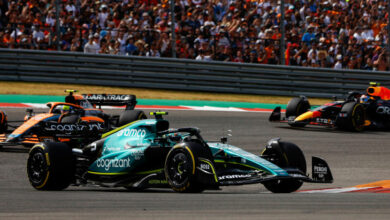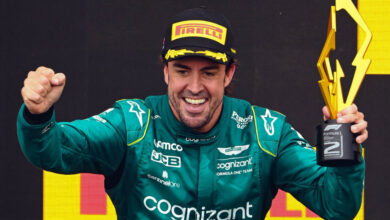The Grand Tour: History Of Clarkson, Hammond & May’s Legendary Road Trips
If I say legendary road trips, there is only one trio that come to mind. Yes Jeremy Clarkson, Richard Hammond and James May and their legendary adventures on Top Gear and then The Grand Tour. The three presenters have epitomised the road trip and taking it to the extreme by racing supercars against all manner of trains, planes and automobiles.
Suffice to say, while Jezza, Hamster and Captain Slow now dominate our screen when it comes to legendary car trips, they certainly didn’t invent it. So where did it all begin?
The first really famous race held between a car and an alternative mode of transport was back in the 1930’s. And like Jeremy in the Aston Martin DB9 it was against a train and was based around the south of France.

The south of France is and always has been associated with the rich and famous. Back in the 1930’s the most luxurious method of getting there was a ferry to Calais and then an incredibly posh train all the way through France, called Le Train Bleu. Le Train Bleu was up there with the Orient Express in terms of prestigious and fast ways to travel, getting from Calais to Cannes in thirty hours.

Meanwhile the cars of the time were reaching the point where you could drive fast and for long periods of time. This marks the point in history where we went from original rudimentary cars to the beginning of the grand tourers we know and love today. The Le Mans 24 hour race, which had its first race in 1923, was the perfect place to develop such a vehicle – in fact many of the worlds grand tourers can trace their roots back to the race.
With motor vehicles developing at such a rate, Le Train Bleu started to become a target for PR executives at automotive firms at the time. After many attempts to beat the train, it was actually Rover who took the historic win using a light six to beat the train from Cannes to Calais by twenty minutes.
After Rover’s incredible triumph against Le Train Bleu, focus now came to beating their record. Next up came Alvis with their Silver Eagle, which beat the train by a full three hours.

However, the most historic win, was with Bentley and their famous Bentley Boys racing driver Woolf “Babe” Barnato, in a speed six. The story goes that Woolf was relaxing at a bar in Cannes and was being pestered by his mates as to how Bentley, who had won three Le Mans titles in a row, could allow Alvis and Rover to take all the glory against the most famous train in Europe.

Bernato succumbed to the peer pressure, but he upped the anti. He didn’t just want to beat the train to Calais, he was going to actually get across the water to the British Isle’s, before the train got to its destination. Thus leaving Alvis and Rover firmly in the dust behind Bentley.
So on the 13th of March 1930, in the Carlton Hotel in Cannes, Woolf Barnato got the call that Le Train Bleu had departed Cannes station at 5:45pm and begun its thirty hour journey to Calais. The race was on.
To ensure that the race didn’t turn into a PR disaster for Bentley, Woolf Barnato had a few tricks up his sleeve. While some car companies would follow the route of the train when attempting the race, Woolf decided to instead go the fastest route point to point.
He had also made some prior arrangements along the route to help him beat the train, for example Bernato arranged for a petrol station in Lyon to stay open past midnight so he could refuel quickly en-route and again he’d arranged for a petrol truck to meet him outside Auxerre at 4am so he wouldn’t have to wait for a petrol station to open in the morning.
It wasn’t all plain sailing however as Bernato blew out a wheel just outside of Paris, which put him 45 minutes behind schedule. His driving from Paris to Calais was immaculate however and he arrived in Calais with an hour to spare until his ferry. The ferry crossing took him an hour and twenty minutes, which left him plenty of time to drive up to London where he arrived at 3:20pm the following day… the train arrived in Calais at 3:24pm.

Given that Bentley had not only beaten the train, but also had reached London before the train even got to Calais, meant that the wins from Rover and Alvis were completely blown out of the water.
It’s easy to see how races against the likes of Le Train Bleu have paved the way for some of Clarkson, Hammond and May’s legendary road trips. If you’re like us, you’d also be amazed that these kind of races could take place back in the 1930’s, but also exceptionally glad they did considering the amazing television that has since graced our television screens as a result.

